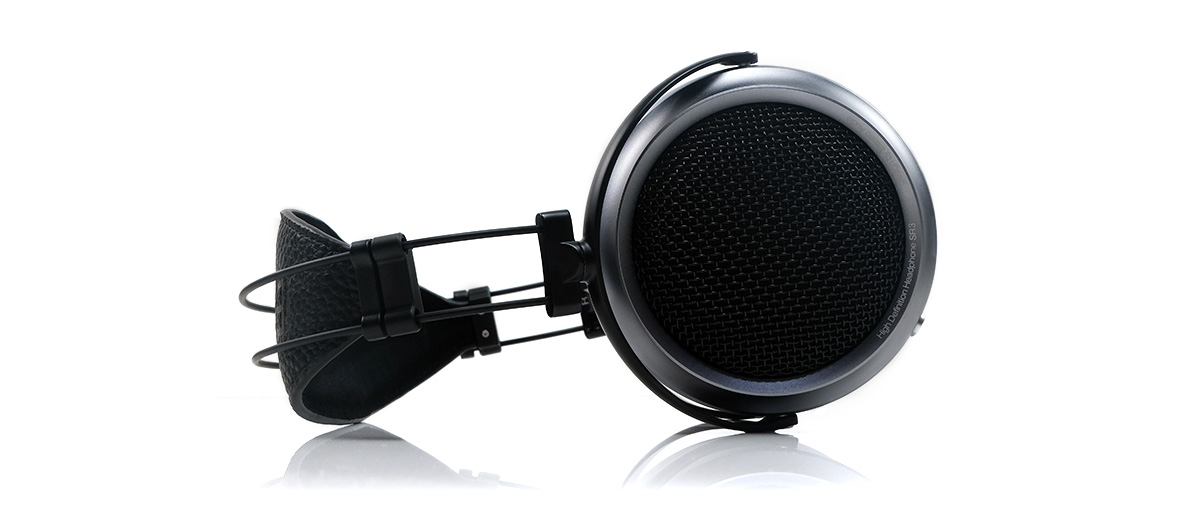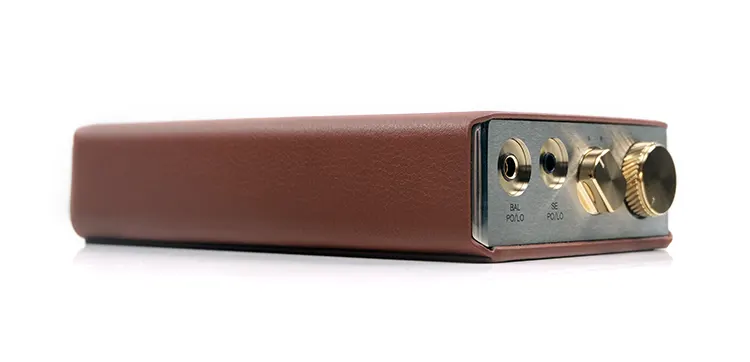Sound Impressions
The following sound impressions of the SR3 were completed using a mix of the Feliks Audio EUFORIA evo and the iBasso DX320 MAX Ti, both separately and with the Max as the mains source to the evo amplifier.
Summary
You get two definite sound signatures with the iBasso SR3 depending on the choice of pads you use.
With the fitted out-of-the-box “type A” or PT1 pad with tighter perforations, the sound is more voluptuous, warmer, and heavier sounding on the lows. The timbre is smoother throughout with a relaxed but clear-sounding midrange and, aside from a little bump around 5-6k, a naturally attenuating treble tuning.
With “type B” or the spare pad with the larger perforations the sound signature is decidedly more neutral to slightly bright with a flatter bass response and a more pronounced upper-mids and treble presence.
The timbre throughout is slightly leaner with a lighter fundamental but most will interpret the overall signature as lively and punchy and one that is more of a natural home with tube or warmer amplifiers that can moderate any potential sharpness.
Both sound signatures have excellent staging qualities, particularly along the X-Axis but if you want the best depth and power the stock pads are the way to go whereas the spare pads shift your listening attention upwards into the mids and highs.
My personal preference is the stock pad with source and amplifier pairings doubling down on that preference. Its 150Ω rating is tailor-made for OTL and some good quality SETA tube amplifiers such as the EUFORIA evo and the Cayin HA-300MK2 digging out incredible dynamics and staging depth.
Amplifiers and DAPs that played more toward the mids performance such as the Auris Audio HA-2SE+ or AMP12/DX320 combo did not do as well with the SR3 low-end leaving the performance a bit too dry and lean for my tastes.
Frequency Response
Of the three SR headphones to date, the SR3 comes the closest to following a modern benchmark reference response curve such as Harman though arguably the midrange from 1-5k is a little south of the ideal peak using the stock pads.
I wouldn’t worry too much about that because the SR3 midrange does have plenty of space and presence without any overwhelming bass bloat so vocals actually sound clearer to me than the previous models.
If you are coming from the SR2 you will notice the lows are a lot more linear now from 1K down to 20Hz. There is just a slight 100-300Hz rise above the Harman Target to give it some nice punchiness but otherwise, this is very controlled and not as booming as the older model.
Switching the pads will tweak that response curve even further with the spare pads flattening the sub-bass even further and reducing some of the mid-bass warmth. It will also raise the upper-mids from 2-5k by a few dB and generally keep around 1-2 dB more treble presence compared to the stock pads.
There is a noticeable 5-6k peak in the tuning but it’s not overly pushed. The only time I notice it is when using the spare pads and solid-state neutral-sounding amplifiers. Higher-pitching percussion tends to lead first in my listening impressions whereas with the stock pads and tube amps it is less pervasive.
Timbre
The SR3 timbre depends ultimately on both your paired source/amplifier and the pads you attached to them.
With the stock PT1 pad, it’s generally natural to slightly warm with good density on the lower pitching instrumental fundamental but lacks the bloom and fulsomeness of the older SR1 and SR2 lows.
Instead, you get a tighter punchier tone that extends really well, especially when you pair with tube amplifiers where the decay lingers a bit more and the mids timbre sounds richer and more euphonic as a result.
With the spare pads or amplifiers with less bass warmth, the SR3 delivers a far more neutral and cleaner note timbre. The fundamental gets reduced considerably with upper-mids and treble influence becoming greater. Note timbre becomes a little drier and brighter though still avoids sounding too lean or brittle in its delivery.
The dichotomy of flavors was notable when switching from the EUFORIA evo to the Auris Audio HA-2SE+ for amplification.
Both are tube amps but the warmer heavier tone of the evo suited the SR3 better for my tastes using the stock pad. You got a firmer more natural sound and a smoother harmonic balance.
The HA-2SE’s reduced the bass weight, quickened the punch and enhanced mids focus. I found this timbral quality and overall presentation didn’t showcase the ‘enjoyability’ of the SR3 as well as the stock pads and evo pairing.
Staging & Dynamics
Now this is where the SR3 really excels for me. I was not expecting the excellent width and the way it could really scale with amplifiers that could take advantage of its higher impedance rating. The better the level of voltage you can chuck into the SR3 the more dynamic and holographic it can sound.
For example, the Cayin N7 balanced output pairing produced a nice dense set of lows but it lacked the punch, speed, and dynamics of the stronger Vrms from the balanced output of the iBasso DX320 MAX Ti.
In turn, neither could expand the staging out in all directions quite like the two OTL and SETA tube amplifiers, the evo and the HA-300MK2. Maximizing the staging potential of the SR3 is a must to hear just how well it can perform.
The SR3 may not offer the abundance of warmth and weight as the older models but it’s much clearer and more focused through the mids as a result with a refined treble giving it a more balanced and immediately engaging presentation.
Compared to the first two models, the slightly lower-register vocal presence is enhanced, particularly with mixed-voice male rock vocals which had much better definition and presence compared to the SR2. I suspect the lack of bass bloom here is a contributing factor to the SR3’s improved midrange clarity.
If you switch to the spare pads though you tend to lose a bit of that power and staging depth with the emphasis switching up to the mids and highs imaging and an underlying mid-bass punch.
Synergy
Efficiency
The iBasso SR3 has a fairly decent sensitivity rating for most sources at an SPL of 106dB at 1kHz. However, that change in voice coil switches the low impedance rating of the previous SR2 and SR1 to a much higher 150Ω level.
Now, that does not mean you will not enjoy the SR3 with low output impedance sources or those with median voltage ratings. This is more about just how well the SR3 can scale with better impedance damping from higher output values provided by amplifiers that focus on delivering good voltage.
That sort of plays into iBasso’s hands a little because, over the years of discussing their DAP power curves, it was often observed that they favored a good voltage bias at high impedance rather than shooting for the 32Ω primacy.
One such example is the DX320 MAX Ti which can chuck out up to 9Vrms into 300Ω loads at up to 9Vrms from its balanced output with the DX320 balanced AMP12 PO offering up to a nominal 8Vrms.
However, as good as their portable sources are in terms of voltage delivery, I would still opt for a quality OTL or modern SETA tube amplifier to maximize the performance of the SR3.
The difference between something like the Feliks Audio EUFORIA evo or the Cayin HA-300MK2 over the AMP12 was particularly noticeable in terms of depth and power. Mind you, these are expensive setups, heck, the DX320 MAX Ti is an expensive setup but they can show that the SR3 can scale admirably with the right pairing.
Desktop Pairings
With the above in mind, I tested a mix of four SETA and OTL amplifiers including the EUFORIA evo, the HA-300MK2, as well as the Feliks Audio Envy, and the Auris Audio HA-2SE+.
Out of those, it was the EUFORIA evo and the HA-300MK2 that impressed me the most with the SR3. Both amps were tested in similar conditions with iBasso DX320 MAX Ti balanced line-out to each amplifier and the Cayin set to its medium impedance level.
You can switch to the balanced 4.4mm output option on the HA-300MK2 and it will sound even more dynamic with improved channel separation but I actually preferred the slightly smoother SE performance. There is plenty of power and headroom for both output options on the HA-300MK2.
Both of these amplifiers gave a much smoother and airier sound signature with the SR3 over the Envy and HA-2SE+ which either felt a little narrower or more mid-centric in the case of the HA-2SE+.
The Envy did better than the HA-2SE+ for bass weight and offered a more powerful sound signature whereas the HA-2SE+ sounded faster and punchier but also shallower and less holographic. However, I did not feel these pairings gave me what I was looking for and that was to really stretch the SR3 soundstage in all directions.
The HA-300MK2/SR3 pairing was excellent. The SR3 sounded huge, complex, and very sweet but still very resolving at the same time. The elasticity of the bass response was intoxicating.
The EUFORIA evo lengthened the decay similar to the HA-300MK2 and of the two, teased out a weightier sub-bass response from the SR3. However, it is not as wide or as airy as the Cayin with this pairing with dynamics just a shade behind.
Portable Pairings
Pretty much all of the DAP pairings felt like a slight step down from the amplifiers but given they are TOTL amps it’s fairly understandable. Still, I had some preferences out of the three I tried which included the iBasso DX320 with AMP12, the DX320 MAX Ti, and the Cayin N7.
If you want the best bass performance from the SR3 then the DX320 MAX Ti and the N7 will give you that but in different ways.
The stronger 4.4mm voltage output of the DX320 MAX Ti will produce a snapper bass response from the SR3. It will sound more impactful and faster. The N7 produces warmer and denser lows but not as much thrust or speed.
Both produce a nice wide staging quality but the DX320 MAX Ti will push up and out a lot more creating a roomier presentation. The N7 does not quite have the same sparkle but I do enjoy its more analog tone through the SR3 mids.
The DX320/AMP12 will give you a neutral bass quantity from the SR3 and shift the emphasis a bit more to the mids and highs. It’s still punchy on the lows, and the overall clarity on the SR3 is excellent but it lacks the density of the N7 sub-bass and the depth and dynamics of the DX320 MAX Ti.









